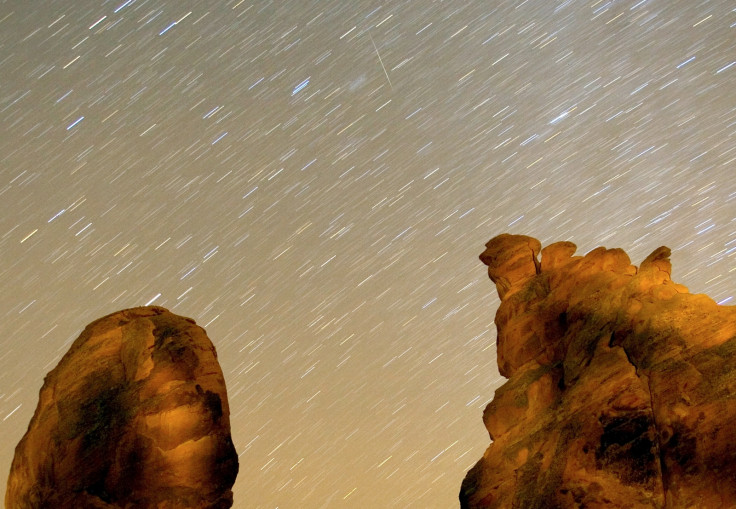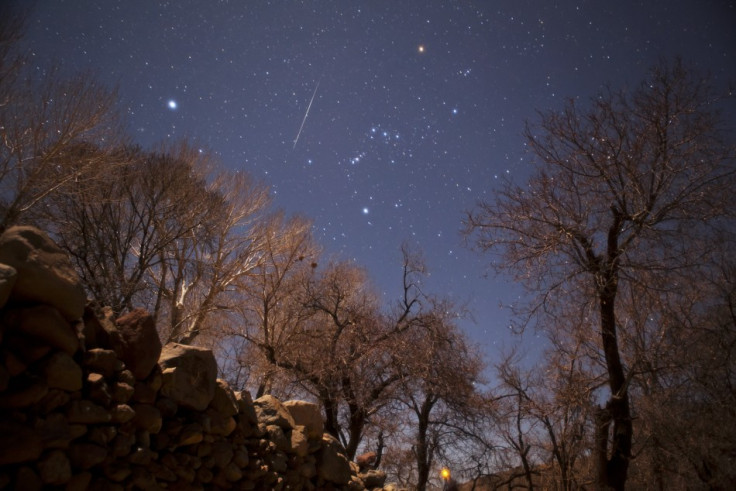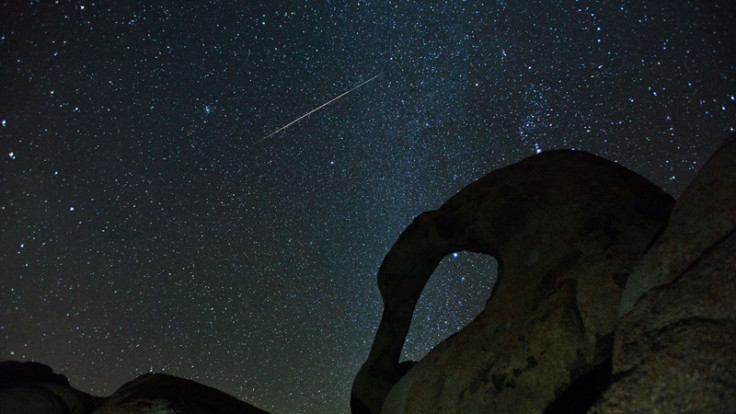Geminids 2014: Where to watch meteor shower in UK, US and live online

One of the best meteor showers of the year will peak this weekend, on 13 and 14 December.
The Geminid meteor shower will be visible from all parts of the world, although stargazers in the Northern Hemisphere are slightly better positioned to see the shower.
Up to 100 meteor per hour are expected to be visible at the weekend, and clear skies are expected for most of the UK, providing optimal viewing conditions.
People living in city centres should head away from the light pollution as much as possible. Earthsky notes: "The best place to watch a meteor shower is always in the country. Just go far enough from town that glittering stars, the same stars drowned by city lights, begin to pop into view.
"City, state and national parks are often great places to watch meteor showers. Try googling the name of your state or city with the words city park, state park or national park. Then, be sure to go to the park early in the day and find a wide open area with a good view of the sky in all directions."
Where to watch in UK cities

London
Near Clapton and Leyton Midland Road rail stations is the WaterWorks Nature Reserve, which is listed as a good spot for stargazing by Dark Sky Discovery. Alternatively head out of the city centre towards Surrey, Kent, Hertfordshire or Essex to reduce the likelihood of light pollution.
Birmingham
Warley Woods in Birmingham is accessible by bus or car from the city centre. People dirving should take the A456 Hagley Road going west from Birmingham City Centre. Another option is Barr Beacon – the highest point in Walsall that offers a 360 degree view of the surrounding landscape.
Manchester
Heaton Park to the north of the city centre is where the Heaton Park Astronomy Group meets. People happy to travel further afield should go to the Surprise View car Park on the outskirts of Hathersage as they can get panoramic views of the Hope Valley.
Edinburgh
Newbattle Abbey College is just of the B703 Newbattle Road is part of Dark Sky Scotland. Alternatively the e Flotterstone Visitor Centre at the Pentland Hills Regional Park is highlighted as a good spot for stargazing.
Cardiff
About an hour from the city centre, the Brecon Beacons offer some of the darkest skies in the whole of the UK. Parc Penallta near Ystrad Mynach is also recommended by Dark Sky Discovery.
Belfast
Oxford Island National Nature Reserve is 25 miles from Belfast. Located on the southern shores of Lough Neagh, it is about three miles from Lurgan.
Newcastle
Cawfields in Northumberland National Park is favoured by the Newcastle Astronomical Society as stargazing spot. It is less than an hour's drive and those heading there from the city should take the A69.
Where to watch in US

New York
Try the Carl Schurz Park on the Upper East Side where the Amateur Astronomers Association sets up telescopes on Friday evenings.
Los Angeles
The Templin Highway in Angeles National Forest has been popular with amateur astronomers for year. It is a 45 minute drive from downtown LA.
Houston
Try the Brazos Bend State Park about an hour's drive from the city centre. However, it closes at 10 so it is worth getting there a little earlier to see the shower.
Chicago
The Hickory Knolls Discovery Centre in St Charles is a nature conservatory and advocate of dark skies.
Philadelphia
Tuckahoe State Park is about two hours from the city centre but is used by the DelMarVa stargazers.
Phoenix
The Riparian Preserve at Water Ranch is less than half an hour from the city and is recommended as a stargazing spot.
San Antonio
The San Antonio Astronomical Association meets at at the Lower Bee Tree Soccer Field parking lot in McAllister Park, just 20 minutes from the city centre.
Where to watch live online

People wishing to watch the meteor shower from the comfort (and warmth) of their own homes can livestream the event via the Slooh telescope.
The broadcast will begin on 14 December at 4am GMT: "We will have stunning visual feeds, so you can hunt for those brilliant streaks of light throughout the sky, as well as a radio audio feed for you to listen for meteors whizzing on by. Also, it would not be a Slooh meteor show without informative audio segments from various Slooh personalities, who will be poking through facts, figures, traditions, and anecdotes surrounding this incredible shower."
Nasa will also be hosting a live chat during the peak of the shower. NASA astronomer Bill Cooke and team members Danielle Moser and Rhiannon Blaauw will be answering questions over a live web chat, with the event due to begin at 11pm EDT.
© Copyright IBTimes 2024. All rights reserved.























